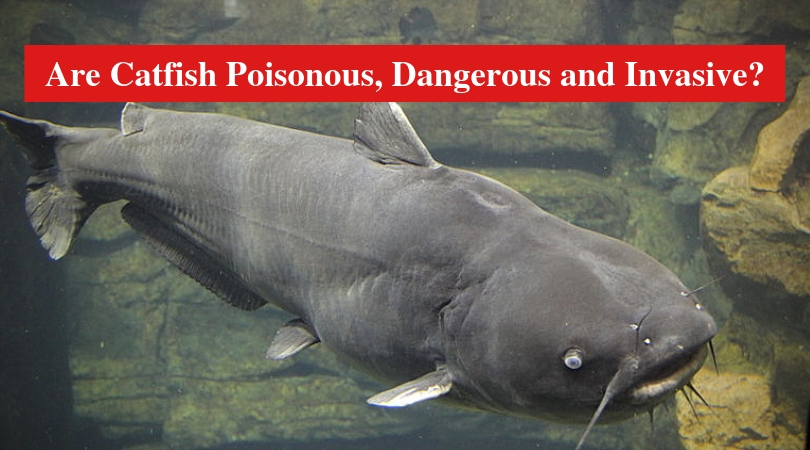
There are many species of catfish; some have been confirmed to be venomous. However, these dangerous species are difficult to find in the rivers. Anglers know how to identify the dangerous species of catfish. If they are found in a particular region, the relevant agencies are notified, and people avoid those areas when they need to go fishing.
Are Catfish Poisonous, Dangerous and Invasive?
We rarely have any issues with catfish regarding danger because they are omnivores and find all they need to eat in their natural habitat. When caught by anglers, the catfish is usually helpless, trapped by the hook, and anglers know how to handle the catfish to avoid any injuries.
Some catfish species are known to have sharp dorsal and pectoral spines that can cause injury if you are stung. However, anglers rarely experience being stung by catfish because they go fishing fully prepared. This means anglers are well dressed and have gloves that protect their hands. Moreover, handling a catfish that has been caught on a hook should be done carefully to avoid those sharp spines, if you have caught one of the catfish species that can sting.
Venomous Catfish
Regarding the catfish species known to be venomous, they can inject a dose of venom when threatened. The venom from catfish can trigger inflammation and in some cases severe pain or dizziness. However, we hardly hear about anglers becoming victims of catfish after being exposed to the venom. This is because catfish can only deploy the use of venom as a defensive mechanism when it is being attacked in its natural habitat.
On the other hand, anglers may only come close to a catfish when it has already been trapped by the hook. Hence, the catfish at this point is seemingly helpless and incapable of biting or injecting its venom. This is why is it important to learn how to handle catfish with the hands.
Invasive Nature of Catfish
Without control, catfish can become invasive in a pond or river. We cannot entirely blame the catfish for its invasive nature because it multiplies very quickly and grows bigger than many fish species. From this perspective, the invasive nature of catfish can be described as an unwanted natural phenomenon.
Catfish are omnivores; they eat seaweeds and smaller fish, as well as insects and other aquatic organisms. The catfish has a diversified diet, which also makes it prone to becoming invasive. Catfish can find its food in many parts of the water, hence its ability to thrive, which can be to the detriment of other smaller fish species in the same region.
The flathead catfish and blue catfish are known to be among the catfish species that can have invasive tendencies. The blue catfish multiply so quickly that in a few weeks or months, the population of blue catfish can distort the normal ecological balance in the river.
There have been studies to observe the invasive nature of catfish and some solutions have been derived for use by farmers who need to prevent catfish from being invasive in their private ponds. Anglers are also encouraged to catch more catfish species that have been found to have invasive tendencies.
Related:
